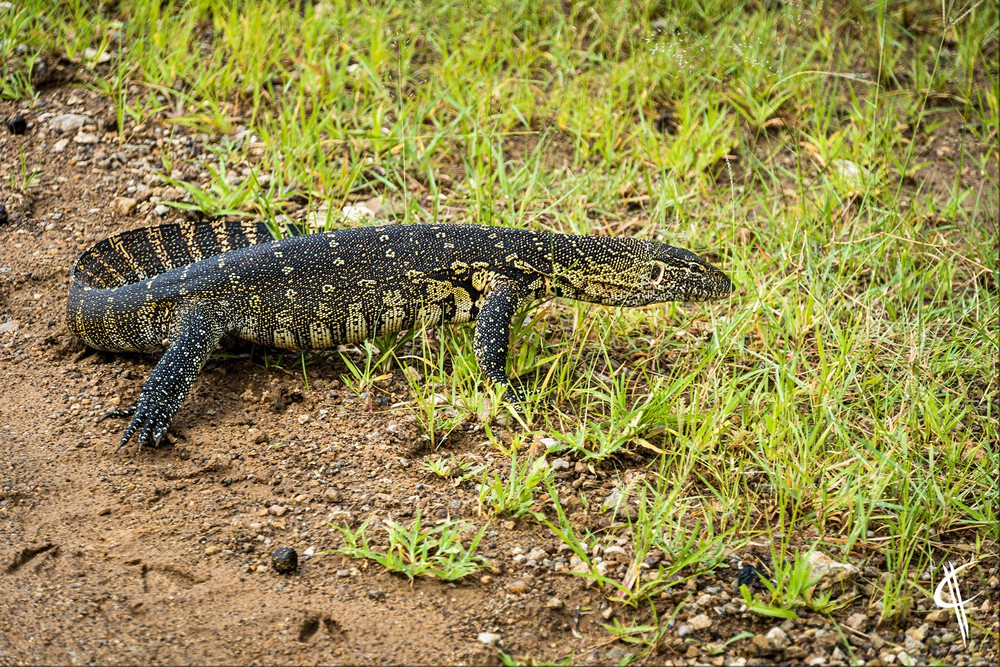5 Fascinating Facts About the Nile Monitor
Facts About the Nile Monitor Lizard
The Overlooked Giant of Africa’s Wetlands
While Africa’s Big Five often steal the spotlight, the continent is home to many lesser-known yet equally captivating creatures. One such reptilian marvel is the Nile Monitor (Varanus niloticus), a formidable lizard that prowls riversides, swamps, and wetlands across sub-Saharan Africa.
With its sleek build, cryptic patterns, and raw power, the Nile Monitor is a living relic of prehistoric times, often overlooked but never unworthy of fascination. This reptile commands respect not only for its size—which rivals that of any lizard on the continent—but also for its remarkable intelligence, adaptability, and ecological significance.
Nile Monitors Are Among the Largest Lizards in the World
A full-grown Nile Monitor is a truly impressive creature. Reaching lengths of over two meters and weighing up to twenty kilograms, this reptile ranks among the largest lizards globally, second only to the formidable Komodo dragon. Its body is long and muscular, with a whip-like tail that accounts for more than half its total length. The tail is not just for show—it serves as a powerful weapon against predators and rivals alike, capable of delivering bone-cracking strikes.
Their skin, adorned with intricate patterns of yellow and black spots, provides effective camouflage in dense vegetation and along murky riverbanks. Equipped with sharp claws and strong limbs, Nile Monitors are adept climbers and swimmers, moving with surprising agility for their size. These physical attributes enable them to dominate their aquatic and terrestrial habitats, hunting and evading threats with ease. Their jaws are lined with recurved teeth designed to seize and hold struggling prey, adding to their fearsome predatory arsenal.
They Are Opportunistic Predators With a Broad Diet
The Nile Monitor is not a picky eater. In fact, it is one of the most opportunistic carnivores in Africa’s wetlands. Feeding primarily on fish, amphibians, birds, and small mammals, it has even been observed raiding nests for eggs and hatchlings, including those of crocodiles. Its strong sense of smell, enhanced by the flicking of its long, forked tongue, helps it locate hidden prey beneath soil, sand, or water.
This dietary flexibility makes the Nile Monitor a critical ecological regulator, preventing overpopulation of smaller vertebrates and invertebrates in its ecosystem. However, its appetite also brings it into conflict with humans. Farmers often accuse the monitor of pillaging chicken coops and duck ponds, leading to retaliatory killings. Yet, in a healthy, undisturbed ecosystem, the Nile Monitor plays an essential role in maintaining ecological balance.
Nile Monitors often exhibit feeding behaviors that resemble intelligence. They have been observed stalking prey stealthily, even exhibiting problem-solving tendencies when pursuing difficult meals. This suggests a higher cognitive ability than typically associated with reptiles, adding to the mystery and marvel surrounding their biology.
Nile Monitors Exhibit Astonishing Adaptability Across Africa
Nile Monitors are native to nearly every country south of the Sahara and are even found in parts of North Africa. They inhabit a diverse array of ecosystems, from freshwater lakes and marshlands to arid savannas, provided a water source is nearby. This widespread distribution is a testament to their extraordinary adaptability. They can tolerate a range of temperatures, elevations, and humidity levels, adjusting their behavior accordingly.
In cooler conditions, Nile Monitors bask on rocks or tree limbs to raise their body temperature, exhibiting the classic behavior of ectotherms. During dry seasons, they may enter a state of dormancy in burrows or termite mounds to conserve energy and moisture. Their nesting behavior is equally versatile, with females laying eggs in sandy banks, hollow logs, or even abandoned burrows.
In regions with heavy human encroachment, Nile Monitors have shown resilience by adapting to man-made environments. Urban waterways, irrigation channels, and even sewage systems have become unintentional habitats. However, their adaptability comes at a cost. These lizards often face persecution, roadkill risks, and entrapment due to human infrastructure. Still, their survival across such varied conditions speaks volumes about their evolutionary success.
Their Reproduction Strategy is a Masterclass in Survival
Reproductive success in the wild hinges on both strategy and timing, and Nile Monitors have mastered both. Mating typically occurs during the rainy season, when food is abundant and environmental conditions are favorable. Males engage in vigorous combat, wrestling with one another to gain access to females. The victorious male then mates with the receptive female, who will later lay between 20 to 60 eggs, depending on her size and health.
What makes their reproductive strategy particularly fascinating is the choice of nesting site. Nile Monitors often exploit termite mounds for egg deposition. The warmth and insulation provided by the termite colony create a stable incubating environment, protecting the eggs from predators and temperature fluctuations. The eggs are left unattended, relying entirely on environmental stability for successful development.
Hatchlings emerge three to six months later, depending on environmental conditions. From the moment they hatch, young monitors are entirely independent. Armed with instinct and physical prowess, they climb trees or scatter through the underbrush to avoid predators, including adult monitors. This self-sufficiency is critical for survival, given the high rate of predation in the wild.
Intelligence, Mythology, and Human Interaction
Despite their intimidating appearance, Nile Monitors have long held a place in local folklore and traditional medicine. In some African cultures, they are regarded as symbols of alertness and agility. Others fear them, associating them with curses or supernatural forces. These mixed perceptions have led to varied human interactions, from reverence and protection to fear and eradication.
Scientific studies have revealed that Nile Monitors exhibit behaviors suggestive of higher cognitive function, such as observational learning and environmental memory. In captivity, some individuals have even been trained to recognize routines and human caretakers. This level of responsiveness places them among the more intelligent reptilian species, rivaling certain birds and mammals in behavioral complexity.
The Nile Monitor’s role in the ecosystem, combined with its intelligence and adaptability, makes it a species worthy of greater recognition and protection. Unfortunately, habitat destruction, pollution, and illegal pet trade continue to threaten local populations. Conservation efforts remain fragmented, and public awareness is limited. Raising the profile of this extraordinary lizard could be a key step in ensuring its future survival.
Discover the Nile Monitor with WildHorn Africa (Facts About the Nile Monitor Lizard)
If you’re seeking a safari experience that goes beyond the familiar, consider setting your sights on the elusive Nile Monitor. Encountering one of these ancient reptiles in the wild is not just a sighting—it’s a glimpse into the primal rhythms of African ecosystems. Their stealth, strength, and mystery are a compelling counterpoint to the grandeur of elephants or the drama of lions.
WildHorn Africa offers immersive safari experiences tailored for those who crave deeper encounters with Africa’s natural wonders. With expert guides, eco-conscious travel planning, and access to pristine habitats, WildHorn Africa ensures that your journey is both thrilling and transformative.
Book your African safari with WildHorn Africa today and unlock the secrets of the Nile Monitor—and so much more. The adventure of a lifetime awaits in the heart of Africa’s wildest landscapes.
Facts About the Nile Monitor Lizard #Facts About the Nile Monitor Lizard Facts About the Nile Monitor Lizard





 WildHorn Africa – Authentic and unforgettable tours across Africa, guided by local experts who know the land, wildlife, and culture best.
WildHorn Africa – Authentic and unforgettable tours across Africa, guided by local experts who know the land, wildlife, and culture best.


